Foraging
NilaJones
11 years ago
Related Stories
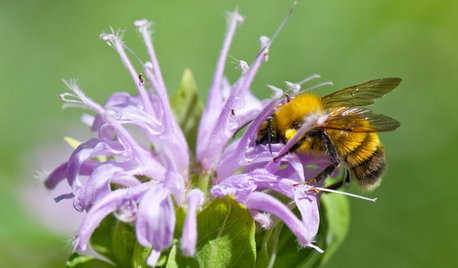
GARDENING GUIDESSupport Bumblebees by Providing Forage in 3 Seasons
Bumblebees are fascinating and fun to observe foraging in gardens. Find out how to create a buffet for these fuzzy, charismatic bees
Full Story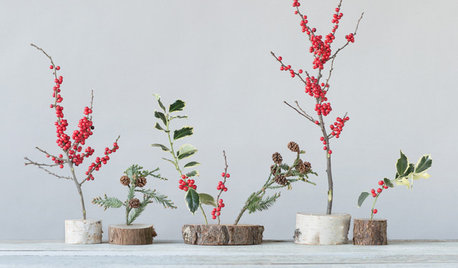
HOLIDAYS3 Recipes for Foraged Holiday Table Decor
The coauthors of ‘The Wreath Recipe Book’ suggest 3 simple table settings you can make from materials found in the yard or at the market
Full Story
NATIVE PLANTSGreat Design Plant: Wild Bergamot, Friend of Foragers
Nourish butterflies and other winged creatures with the tubular flowers of Monarda fistulosa, a pretty pink native
Full Story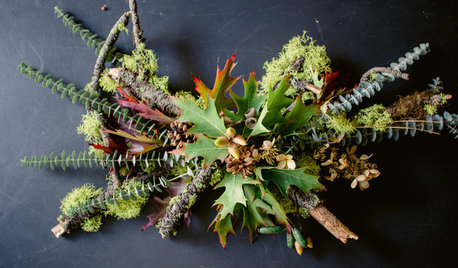
DIY PROJECTSHere’s a Thanksgiving Centerpiece You Can Use Through the New Year
Make a fall centerpiece that can transition to winter with ingredients foraged in nature
Full Story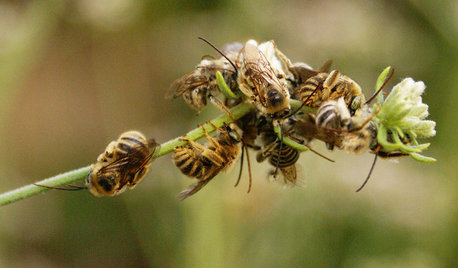
GARDENING GUIDESGreat Design Plant: California Buckwheat Pleases Pollinators
Beneficial insects go wild for this drought-tolerant plant’s summer flowers, while seed heads feed critters foraging in the cold
Full Story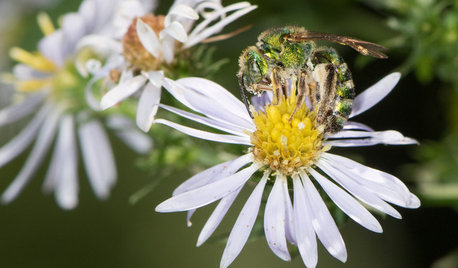
GARDENING GUIDESLook for Metallic Green Sweat Bees Visiting Your Garden This Fall
These beautiful sweat bees will dazzle and delight you with their bright emerald green color and midsummer and fall flower visiting
Full Story
GARDENING GUIDESInvite Cellophane Bees to Your Garden by Providing Patches of Bare Soil
Look for cellophane bees (Colletes) pollinating flowering trees and shrubs in U.S. gardens this spring
Full Story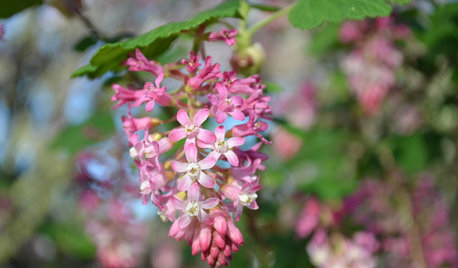
GARDENING GUIDESGreat Design Plant: Feed Wildlife With Flowering Currant
Blossoms and berries make this plant irresistible to birds, bees and other critters — and a treat for the eyes too
Full Story
GARDENING GUIDESInvite Mining Bees to Your Garden by Planting Their Favorite Plants
Look for mining bees (Andrena) pollinating woodland wildflowers in U.S. gardens this spring
Full Story
GARDENING GUIDESBackyard Birds: How to Care for American Goldfinches
The American goldfinch is a bright-in-the-summer visitor and one of the only vegetarian songbirds. Here's how to give them a healthy habitat
Full StoryMore Discussions







LynnMarie_
macky77
Related Professionals
Beavercreek Landscape Architects & Landscape Designers · Erie Landscape Architects & Landscape Designers · Horsham Landscape Architects & Landscape Designers · Wheeling Landscape Architects & Landscape Designers · Finneytown Landscape Architects & Landscape Designers · Buford Landscape Contractors · Aberdeen Landscape Contractors · Berkley Landscape Contractors · Cicero Landscape Contractors · Paso Robles Landscape Contractors · Salem Landscape Contractors · San Antonio Landscape Contractors · Winchester Landscape Contractors · Brenham Driveway Installation & Maintenance · Fort Worth Driveway Installation & Maintenanceanother_buffalo
Raw_Nature
pnbrown
NilaJonesOriginal Author
Raw_Nature
glib
moosemac
pnbrown
harveyhorses
macky77
glib
macky77
sunnibel7 Md 7
glib
Raw_Nature
tishtoshnm Zone 6/NM
nc_crn
wertach zone 7-B SC
pnbrown
Raw_Nature
Raw_Nature
macky77
flora_uk
Raw_Nature
NilaJonesOriginal Author
macky77
soilent_green
Raw_Nature
NilaJonesOriginal Author
Raw_Nature
harveyhorses
Raw_Nature
tempusflits
Raw_Nature
caryltoo Z7/SE PA
another_buffalo
theforgottenone1013 (SE MI zone 5b/6a)
terrene
pnbrown
theforgottenone1013 (SE MI zone 5b/6a)
lkzz
pnbrown
glib
theforgottenone1013 (SE MI zone 5b/6a)
pnbrown
theforgottenone1013 (SE MI zone 5b/6a)
leila hamaya
Deeby